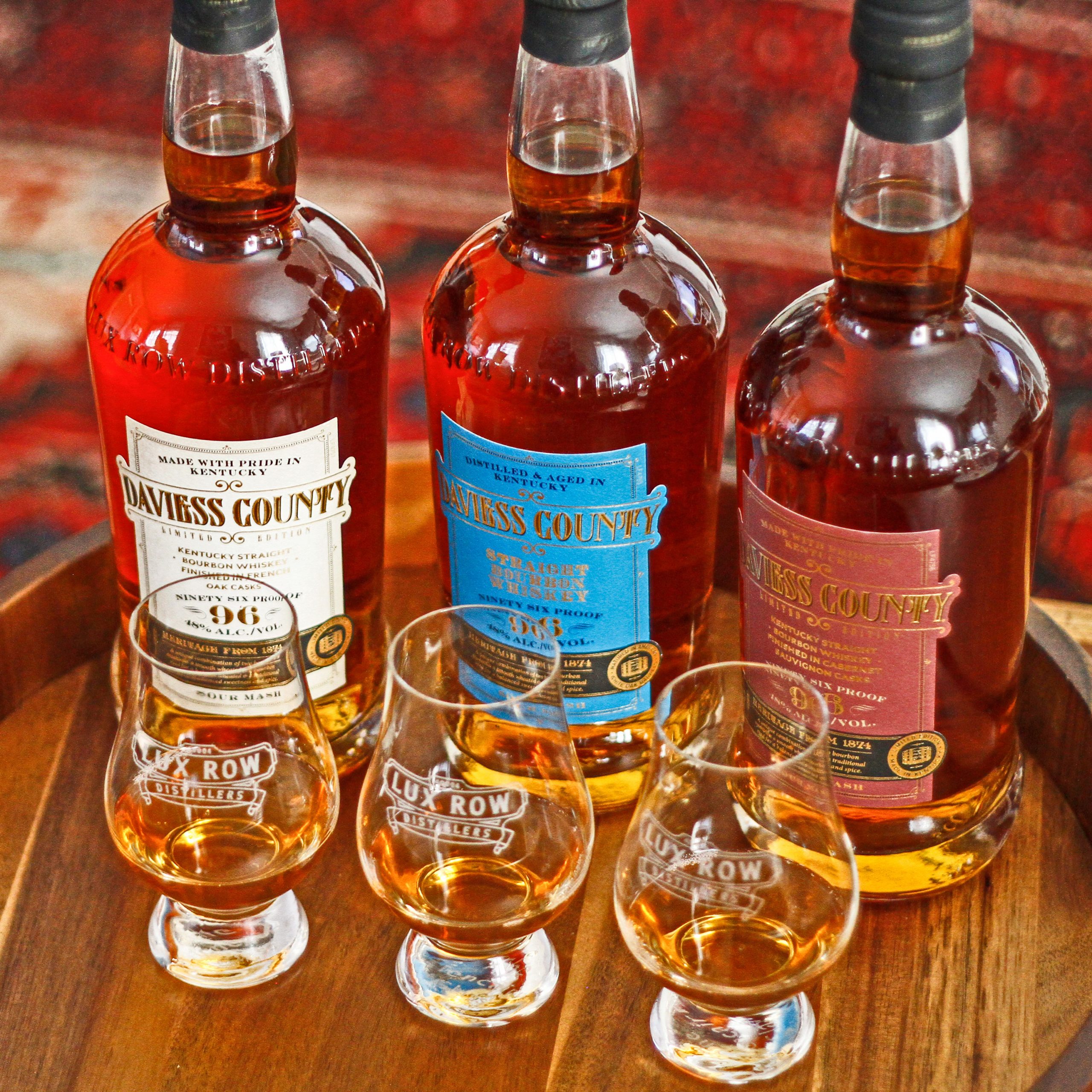Making bourbon is a complex process, and a lot goes into crafting your favorite dram. One of the most distinctive factors that separate one bourbon from another is the mashbill, which is essentially the specific combination of ingredients that goes into each barrel before it’s stored.
However, multiple mashbills can serve as the base for a bourbon family with a variety of finished bourbons. If you’re wondering how this is possible, you’re not alone.
Here at Daviess County, we love teaching people about all things spirits (especially whiskey blending!), because understanding the science behind your favorite libations can help you enjoy them even more. If you’re a whiskey lover who wants to learn more, read on to discover how mashbills are used to create multiple bourbons all within the same brand family:
What is a Mashbill?
The word ‘mash’ refers to the grains that serve as the raw materials for making whiskey. The word ‘mashbill’ refers to the mix of grains that are used in the distillation process.
Although different producers use their own unique blend of grains, there are certain specifications that determine how each spirit can be labeled and sold. For example, in order for a whiskey to be considered bourbon, the mashbill must contain at least 51% corn (among other rules).
The ratio of the other ingredients in the mashbill is important for the overall flavor of the bourbon. Each type of grain adds different characteristics:
Wheat — Wheat adds softness and smoothness, along with honey flavors and nutty notes. Bourbons with a high percentage of wheat tend to be sweet and easy drinking.
Corn — Since corn has to make up the majority of the mashbill in bourbon, it’s an important flavor component. Corn adds buttery, sweet notes that help define bourbon’s overall taste.
Rye — Rye adds definitive peppery, spicy notes that also contain hints of cinnamon and chocolate. Bourbons with a higher percentage of rye in the mashbill will have a more noticeable ‘bite’.
The raw ingredients in the mashbill are ground into a powder and then ‘cooked’ in hot water. The sugars and starches get extracted during the heating process, and then yeast is added.
At Lux Row Distillers there are two mashbills our bourbons are made from–one wheated and one ryed. Daviess County Bourbon and its variants are a tasty blend of both.
Not every distillery shares its mashbill, but we do. Our wheated mashbill is 68% corn, 20% wheat, and 12% malted barley. Our ryed mashbill is made with 78% corn, 10% rye, and 12% malted barley.
Now that you have a better understanding of mashbills, let’s find out how different bourbons, in the same family, can be crafted with our wheated and ryed mashbill.
The Difference is in the Barrels (and aging of course)
Just like with the mashbill, there are certain guidelines regarding aging that determine whether or not something is considered bourbon. All bourbon must be aged in a brand new American White Oak barrel. However, after this requirement has been met, producers are free to ‘finish’ their bourbon in other barrels—which plays a huge role in the outcome of the final product.
These barrels are often called ‘casks’ and producers carefully select specific ones to impart certain flavors. They do this often by selecting barrels that were previously used to age other spirits such as rum, wine, port, etc. Or if there is another specific flavor they want, they may choose another type of wood barrel to finish the bourbon in. Like we do for our French Oak Finish.
Learn more about Daviess County finishing barrels.
When bourbons are aged in other barrels, they take on the flavors of the wood, as well as the notes of whatever spirit they were formerly used for. This is how it’s possible for bourbon with the exact same mix of ingredients to taste completely different.
The amount of time the bourbon is left to age in these barrels is another contributing factor. As the juice ages in the barrel, it takes on more of the barrel’s flavor and loses some of its proof.
Daviess County Bourbon: 3 Variants from Two Mashbills
Daviess County Bourbon has several variants that perfectly demonstrate how the two mashbills from Lux Row Distillers can be used to craft multiple bourbons. At Daviess County, the signature base blend is composed of a unique combination of our wheated and ryed mashbills. Then, each variant is finished in casks to create different options for bourbon lovers.
Kentucky Straight Bourbon Whiskey — This classic Kentucky bourbon has notes of oak, caramel, and graham cracker on the palate, with honey and vanilla on the nose.
Cabernet Sauvignon Finish — Finished for six months in Napa Valley Cabernet Sauvignon barrels, this variant is deliciously complex. It has a smooth mouthfeel with notes of fruit and oak, as well as a long, warm finish.
French Oak Finish — This variant spends six months aging in French Oak barrels which gives it a unique, oaky spice. The oak barrels give this bourbon distinct woody characteristics along with hints of chocolate.
Taste the Difference
While learning about what makes different bourbons unique in theory is great, the best way to learn is in practice—and by practice, we mean drinking! Tasting several variants of Daviess County Bourbon side-by-side is an excellent (and delicious!) way to taste how the finishing process impacts the flavor of bourbon.
If you want to learn how to do a proper bourbon tasting, we can teach you with this blog post!
Pick up a few bottles today or schedule a tour to learn more at the Daviess County Bourbon at Lux Row Distillers.








